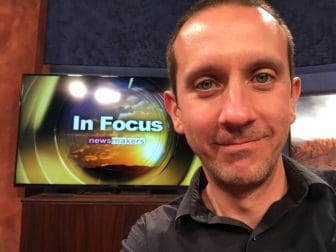COMMENTARY: New Mexico’s deep wounds were exposed last year when protesters disrupted the annual re-enactment of Spanish conquistador Don Diego de Vargas’ retaking of Santa Fe in 1692.

Heath Haussamen
“Slay! Slay! Slay like Po’Pay!” protesters chanted, according to The Santa Fe New Mexican. Ohkay Owingeh’s Po’Pay led the Pueblo Revolt in 1680, when Native Americans kicked the colonizing Spaniards out of New Mexico.
The Spanish returned from El Paso, Texas 12 years later and seized Santa Fe. To this day, the annual Entrada celebration calls that event peaceful. That’s a lie.
Last year’s protest elicited dismissive responses from some. “You’re lucky that what happened back East didn’t happen here,” Leroy Vigil was quoted by The New Mexican as saying. “We took your gold, and we gave you religion, and we took your women. That’s why you’re Vigil and Martinez and Gonzales and Gallegos.”
Vigil’s adult daughter Jamie was quoted as saying Native Americans could change their names if they wanted.
The protest came from “outside people,” Gloria Mendoza alleged. She pointed to Natives selling jewelry nearby and said they weren’t protesting.
That image – of Natives selling jewelry on the sidewalk, an attraction to draw tourists into others’ stores on the Santa Fe plaza – is evidence that colonization still impacts Native people today.
My Montes ancestors were among the Spanish colonizers. They came from Zacatecas three years after de Vargas retook Santa Fe to help solidify Spanish presence in northern New Mexico.
I’m reminded of the words of James Baldwin, a prophet during the civil rights era, writing about racism against black people: “I have always been struck, in America, by an emotional poverty so bottomless, and a terror of human life, of human touch, so deep that virtually no American appears able to achieve any viable, organic connection between his public stance and his private life.”
“…If Americans were not so terrified of their private selves, they were never have become so dependent on what they call the ‘Negro problem,’ ” Baldwin wrote. “This problem, which they invented in order to safeguard their purity, has made of them criminals and monsters, and it is destroying them.” He blamed “the role of a guilty and constricted white imagination.”
The “emotional poverty” Baldwin described plagues our region today. Natives should be glad Spaniards got to them before Americans? They can change their names if they don’t like it? These deflections are symptoms of guilt that has been buried over generations so people can sleep at night.
It’s encouraging to see New Mexicans peacefully demonstrating in response to the recent racism and violence at the “Unite the Right” rally in Virginia, and to see the City of El Paso removing Confederate general Robert E. Lee’s name from landmarks. That helps address pain caused by America’s history of racism.
But our region’s pain predates America. What about statues celebrating Spanish conquistador Don Juan de Oñate forcefully taking this land in 1598? There’s one at the El Paso International Airport and another in Rio Arriba County. Celebration of Spanish colonization surrounds us.
Santa Fe Mayor Javier Gonzales, who portrayed de Vargas in the 1989 Entrada, says it’s time “to have an honest narrative of what happened in 1692.” He has not called for an end of the celebration.
Honesty isn’t enough. We, the descendants of colonizers, need to let ourselves feel Native Americans’ pain – and our own. With Santa Fe’s Entrada coming up next month, it’s time to face the truth and find a way to respect our brutal history without glorifying it.
Heath Haussamen is NMPolitics.net’s editor and publisher. Agree with his opinion? Disagree? We welcome your views. Learn about submitting your own commentary here.